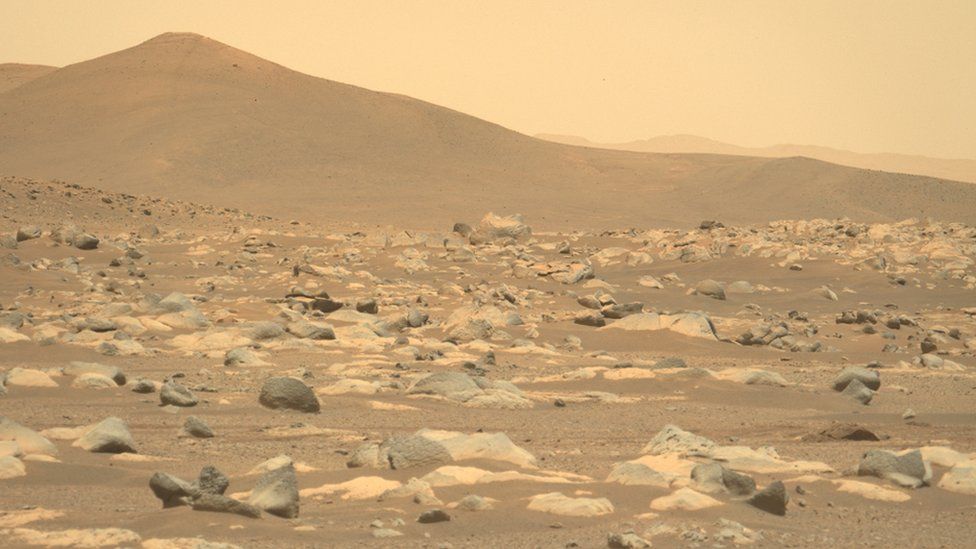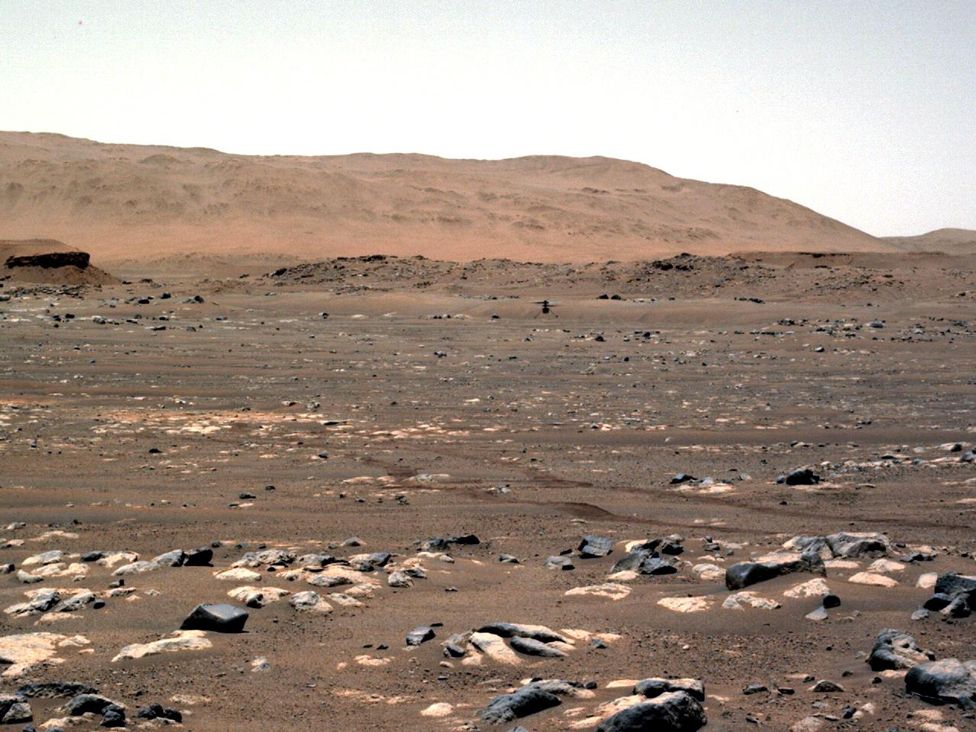= ASTRONAUTICAL EVOLUTION =
Issue 163, 14 February 2022 – 53rd Apollo Anniversary Year
| Site home | Chronological index | Subject index | About AE |
This post is also available on Wordpress
How Will the First Astronauts on Mars Spend Their Time?
This post continues the train of thought from my previous post.
If we are going to practise for Mars on Earth, then there needs to be clarity about what exactly needs to be practised.
The space agency paradigm
The usual assumption has been that the first humans on Mars will be scientists on a field trip. Like the crew of Apollo 17, there will be one or more professional geologists, and one or more professional pilots/technicians to support them in space and during the surface sojourn. As Zubrin puts it: there will be two “Spocks” and two “Scottys” (but no “Kirks”, and positively no “McCoys”).
This assumption has been carried over into the whole Earth-based Mars mission simulation industry, as practised both by space agencies (HiSEAS, Mars-500) and by private groups (Mars Society, Austrian Space Forum, LunAres).
(For an up-to-date account of the Mars Society’s Desert Research Station in Utah, see this new interview with its director, Dr Shannon Rupert.)
But Elon Musk and SpaceX have completely changed the picture. Mars is no longer about Apollo-style field trips for four to eight scientist-astronauts: rather it has now become a crash programme to build a self-sustaining city for a million people in the narrow window of time before the supply chain from Earth is broken by nuclear war, catastrophic climate change or hostile artificial intelligence.
Was the scientific field-trip paradigm ever realistic?
Consider some of the big differences between exploring Mars and exploring Antarctica or the Moon:
- Mars is so remote from Earth that spacecraft access is restricted to narrow periods at two-yearly intervals, requires voyages many months in length each way, and requires unprecedented quantities of rocket propellants.
- There’s a high likelihood that, during a one and a half year sojourn on the surface in hazardous working conditions, a team of explorers will suffer a major technical malfunction that strands them on Mars, or a fatal accident. Remember that in the Apollo paradigm, they will be reliant upon technologies which are still at the experimental stage, not having been matured through large-scale use in Mars-like environments.
Realistically, if one is going to do sustained exploration of Mars, both on and underneath its surface, in sufficient detail to establish four billion years of its geological and probably also biological past, the starting-point has to be a secure base with local production of all essentials, a well-developed transport network using mature technologies, and local laboratories and hospital facilities.
We don’t have to go all the way with Musk’s vision of a city with a million-strong population to see that some degree of settlement is necessary right at the outset if we are going to have any kind of serious engagement with the planet.
This directly affects what we expect the first astronauts on Mars to be doing, and therefore the kind of preparation they need on Earth before they are ready for departure.
Tasks for the first people on Mars
The tasks can be arranged in “tiers” to illustrate their order of priority. We start off with a tier nought before the first astronauts arrive: all serious Mars exploration architectures start off with a robotic landing to begin automatic local production of methane/oxygen propellants for the return to Earth leg of a two-way mission. (Astronauts cannot be expected to commit to permanently living on Mars until local infrastructure is up to terrestrial standards of living space, working conditions and healthcare – and until the effects on the human body of environmental hazards such as the low gravity are well understood.)
This production uses the carbon dioxide freely available in the atmosphere. It relies upon imported power (most probably a small modular nuclear reactor, though SpaceX currently plans to use solar panels) and imported hydrogen.
First-tier tasks
After the first astronauts arrive, the surface activities will be dominated by human-operated machines such as earth-movers, drills and cranes. The machines will see hard use and will need constant cleaning, maintenance and repair.
The main first-tier tasks will be:
- Establish a water-extraction industry, in order to remove dependence upon imported hydrogen. This will require man-tended operations to drill down into glaciers or aquifers.
- Establish geothermal power, in order to remove dependence upon imported nuclear/solar power systems. Again this will involve deep drilling.
- Establish secure living-space using imported inflatable prefab modules. The foundation will need to be an area of ground levelled and cleared of rocks, and a covering of unprocessed bulk regolith may be used for thermal and radiation protection.
The requirements for water and power will dictate the siting of the base.
The number of people on Mars at any one time will be in the range of 10 to 50, all of whom return to Earth at the end of a physically and mentally demanding tour of duty – not unlike a similar sojourn at an Antarctic research base, on patrol in a nuclear submarine, or on an ocean oil rig.
Second-tier tasks
Science is still a luxury activity, pure scientists a rarity. The top priorities remain survival and security in a hostile world, with the scientific emphasis on investigations needed for direct application to the industrial processes under development.
The main second-tier tasks will be:
- Establish biosphere management for long-term support of the human population. This involves local food production, full recycling of water, oxygen and solid wastes, and management of all the species – edible, decorative and microbiological – with which the human occupants share their base.
- Establish mining and manufacturing industries for basic raw materials from the local regolith. The products will include cement, glass, metals, plastics and basalt fibre.
- Begin the construction of larger living spaces from local resources, in order to remove dependence upon imported prefabs to house a growing population.
The numbers of people on Mars at any one time now creep past 100. Individuals begin to stay in the colony for multiple two-year stints. By the end of this stage there is no longer maintained sufficient transport capacity to return them all to Earth in the event of disaster: the settlement can no longer be abandoned.
Local repair workshops are becoming increasingly capable of maintaining the tools and machines supplied from Earth, but have not yet evolved to the point of being able to manufacture new units from scratch.
Third tier tasks
By the third tier, life on Mars should be more comfortable and less stressful, more like regular life in a business environment on Earth. The first Mars babies are being born, adding nursing and teaching roles to the industrial ones which have dominated so far. With population numbers rising into the thousands, there is sufficient surplus of labour and reliability of long-distance vehicles to allow major scientific studies to begin.
The main third-tier tasks will be:
- Establish machine-building industries, covering the main large-scale items needed for all routine mining, manufacturing and construction activities: earth-movers, drilling rigs, cranes, storage tanks, factory buildings and vehicles, plus maintenance and refuelling depots for all these.
- Establish high-tech industries in order to remove dependence upon all remaining imported items: medicines, electronics, nuclear fuels, photovoltaic cells, instruments and tools of all kinds.
- Develop the political and economic system away from the military-style command economy that was necessary to first establish the colony, and towards some version of civilian-style liberal democratic capitalism with some kind of money economy.
Prepare to colonise Mars by first colonising Earth
At its current stage of development, human civilisation on Earth is suffering from a number of well-known problems regarding both its global political organisation and its economic and environmental sustainability.
Getting it right on Mars requires us to get it right on Earth as well. Future cities on Earth need to be far more Mars-like than they are at present in terms of having a low environmental impact and high levels of recycling of organic and industrial wastes.
It’s way past time for serious studies of future human life on Mars to seize this parallel between the two situations, both as an economic route to fund Mars ventures, and in order to secure global public engagement and support for an expansive, creative and optimistic future for humanity.
This is the purpose of the project which I have named Planetopolis. I would appreciate engagement and support for this initiative.
Thank you!
| Site home | Chronological index | About AE |


